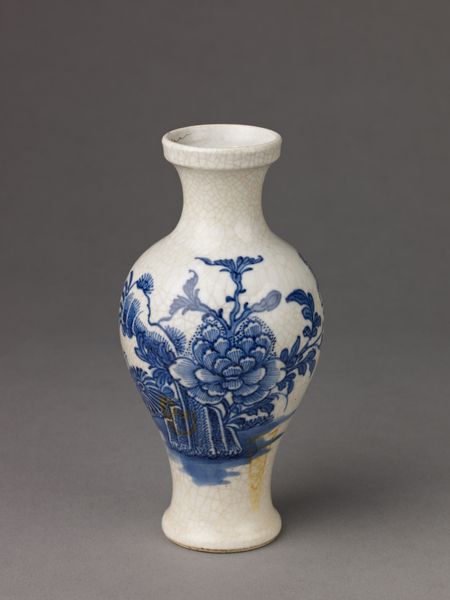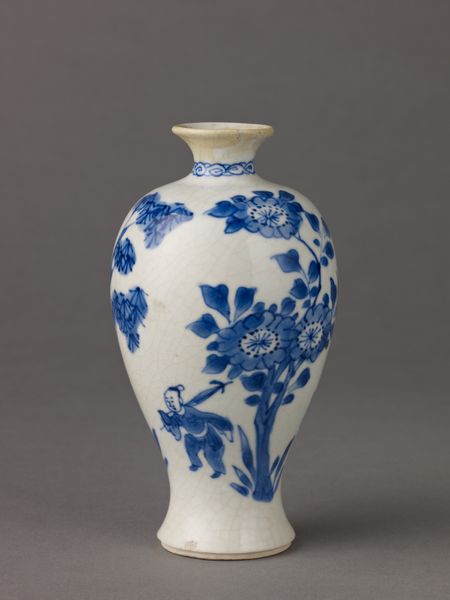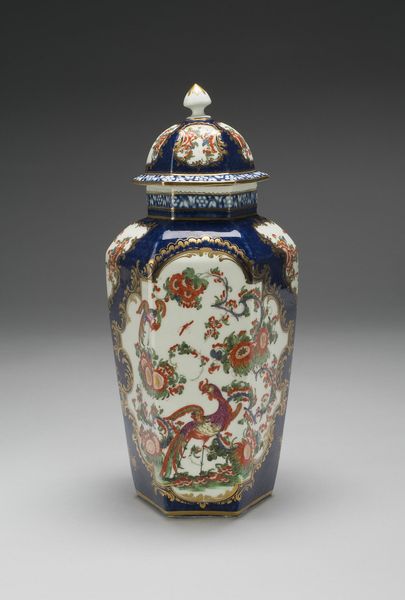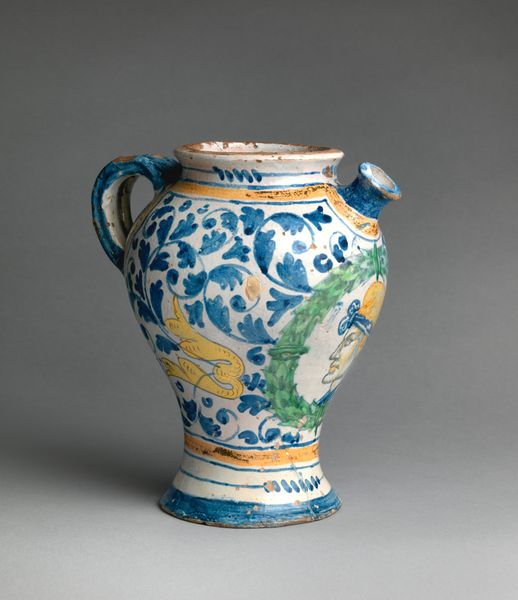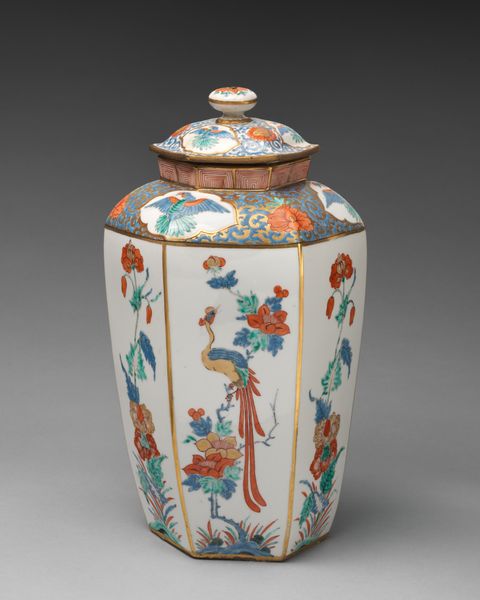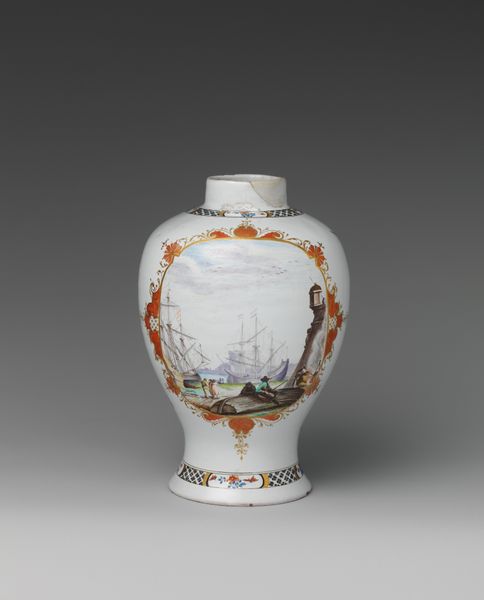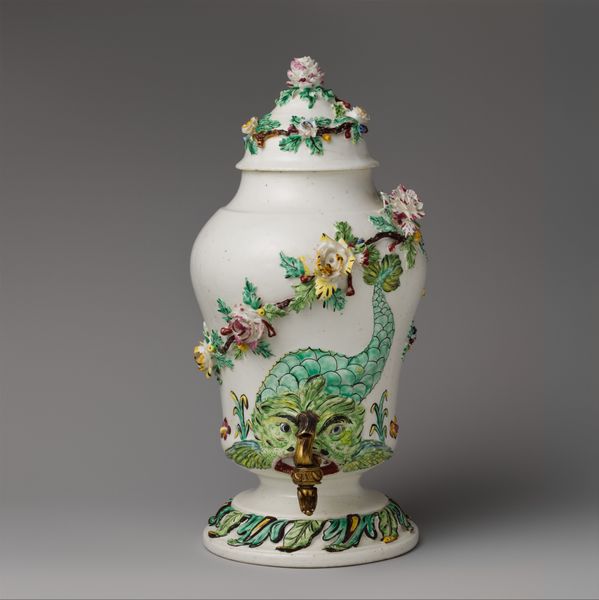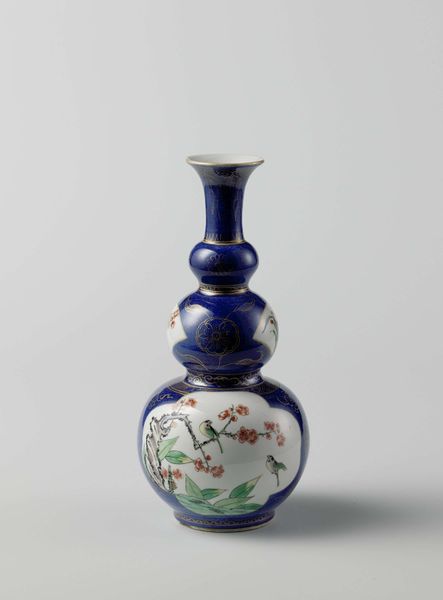
Dimensions: Height: 12 1/2 in. (31.8 cm)
Copyright: Public Domain
Editor: This is a porcelain beaker, part of a garniture, made in Bristol around 1768-1778. It strikes me how the landscape paintings are distinctly different on each panel of this object, in different hues of the same tones. What stands out to you about the way this piece was made? Curator: It’s fascinating to consider this object as a product of 18th-century porcelain manufacture. Think about the division of labor. One set of artisans for the initial shaping, another perhaps specializing in the application of those gilded details, and yet another, distinct workshop dedicated to painting those landscape scenes. Editor: That's incredible to think about. Were these artisans considered "artists" or simply skilled laborers? Curator: Precisely the question! The commodification of craft during the Rococo period blurred those lines. The materials, too, were deeply embedded in trade networks and social hierarchies. Where did the raw porcelain come from? Who profited from its transformation into this luxury item? These are the crucial questions. How does the value of this beaker stem not just from its aesthetic qualities, but also from the labor and resources poured into its creation and exchange? Editor: I see. It's not just a pretty vase; it embodies a whole economic and social system. Curator: Exactly! This ceramic beaker prompts us to unpack those interconnected processes and meanings. Considering the working conditions for pottery painters at the time reveals that labor may have been exploitative. These painters’ mark often remain unknown and uncelebrated, so this speaks to an erasure of artistic attribution to enforce colonial narratives that highlight trade success only from merchants of western descent. What happens when we focus on these social structures in the analysis of Rococo decorative arts, what do you see? Editor: I never thought about it that way before, focusing on materials and work put in. This beaker is not just an artwork; it’s a cultural artifact, showcasing power relations. Curator: Absolutely, a vessel containing not just flowers, but also history and complex production dynamics.
Comments
No comments
Be the first to comment and join the conversation on the ultimate creative platform.
